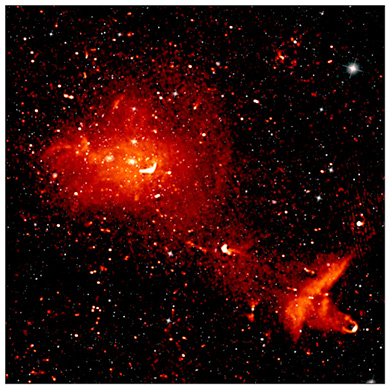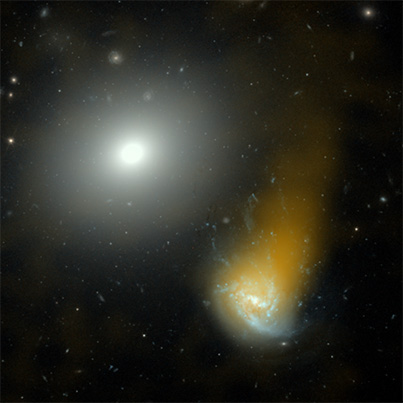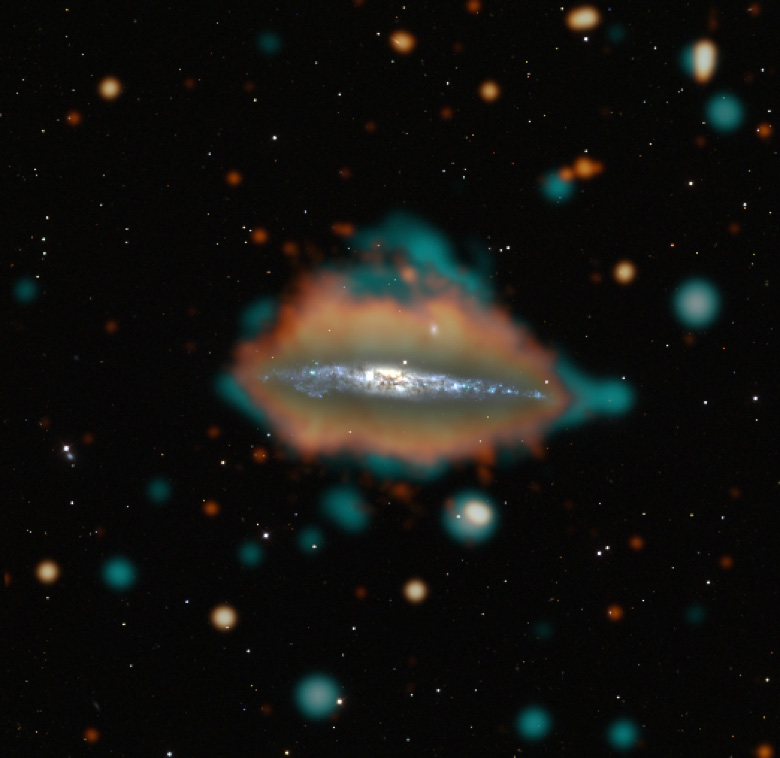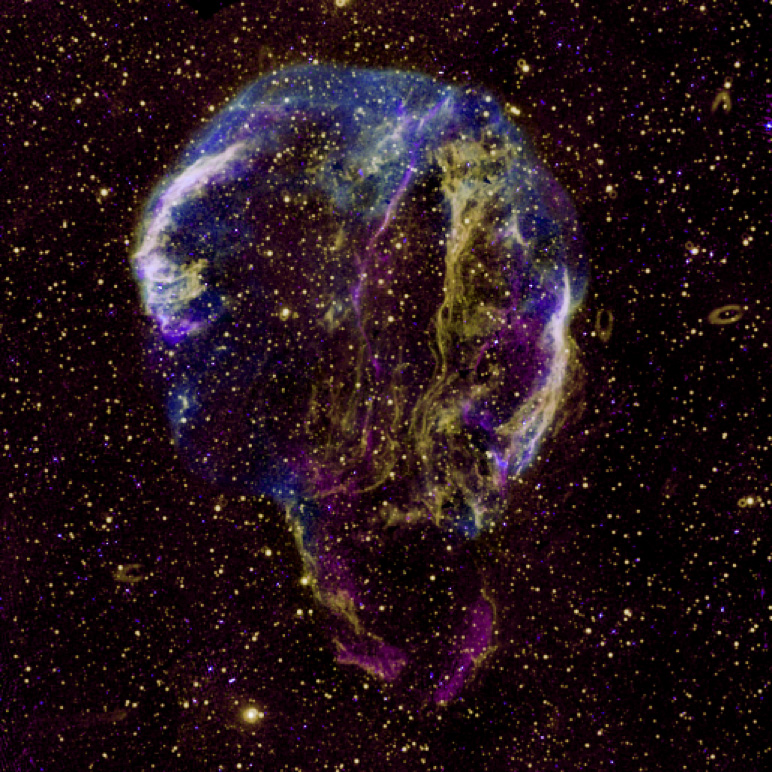
The majority of the objects detected by LOFAR are billions of light years away. Their radio light is created by electrically charged, high-energy particles accelerated by explosions of young, massive stars in galaxies or by huge black holes. Rarer objects have also been discovered and include groups of distant colliding galaxies and erupting stars in the Milky Way.
Many scientific papers have already been published thanks to the wealth of information contained in this image, which was previously only accessible to scientists in the international consortium. Studies have focused, for example, on the observation of "jellyfish galaxies" that release matter when they cross their environment, or the immense eruptions of energy by black holes that disturb the extragalactic medium. These data have also allowed the discovery of signals from nearby stars that could be induced by orbiting exoplanets or the detection of a slowly rotating pulsar whose existence challenges current theories describing such objects. The number and complexity of radio galaxies discovered by LOFAR are such that a participatory science project has been set up.
This huge map has been produced thanks to advanced algorithms developed at the laboratory "Galaxies, stars, physics and instrumentation" (GEPI, Observatoire de Paris - PSL/CNRS). They have been deployed on powerful computers all over Europe to process the 3500 hours of observations that occupy 8 petabytes of disk space (equivalent to a 2km high DVD stack). This is by far the largest release of data from the LOFAR Two-meter Sky Survey, featuring about a million objects that have never been seen before - in any energy range.
Astronomer Timothy Shimwell (Leiden University and ASTRON) said, "Every time we synthesize a map, our screens reveal objects that have never been seen before by human eyes. Exploring these unknown phenomena that shine in the radio energy universe is an incredible experience and our team is excited to be able to share this map with the general public. It represents only 27 percent of the final image, but we expect it to lead to many more scientific breakthroughs, including studying the development of the universe’s largest structures, supermassive black holes, the physics governing star formation in distant galaxies."
About LOFAR
LOFAR is a low frequency observing radio telescope designed and built by ASTRON. It has observing, processing and data storage facilities in several countries, owned by different parties (each with their own funding sources), and collectively operated by the International LOFAT Telescope (ILT) Foundation under a common science policy.
The resources of the ILT have benefited from the following recent major funding : CNRS, Observatoire de Paris - PSL, the Nançay Radio Astronomy Station and the University of Orleans, France ; BMBF, MIWF-NRW, MPG, Germany ; Science Foundation Ireland (SFI), Department of Business, Enterprise and Innovation (DBEI), Ireland ; NWO, The Netherlands ; The Science and Technology Facilities Council, UK ; Ministry of Science and Higher Education, Poland ; The Istituto Nazionale di Astrofisica (INAF), Italy.
This research used the Dutch national infrastructure with support from SURF (e-infra 180169) and NWO (grant 2019.056), the Dutch LOFAR long-term archive hosted by SURF and the LOFAR e-infra group. The Jülich LOFAR long-term archive and the German LOFAR network are both coordinated and operated by the Jülich Supercomputing Center (JSC), and computing resources on the JSC JUWELS supercomputer were provided by the Gauss Center for Supercomputing eV (grant CHTB00) through the John Institut von Neumann for Informatics (NIC).
This research used the University of Hertfordshire High Performance Computing Facility and the LOFAR-UK computing facility located at the University of Hertfordshire and supported by STFC [ST/P000096/1], as well as the Italian LOFAR computing infrastructure supported and operated by INAF, and by the Department of Physics of the University of Turin (under an agreement with the Consorzio Interuniversitario per la Fisica Spaziale) at the C3S Supercomputing Center, Italy. The algorithmic developments have been done with the help of the Nançay Data Center. The data are published via the SURF Data Repository which is supported by the EU-funded DICE project (H2020-INFRAEOSC-2018-2020 under grant agreement no. 101017207).








